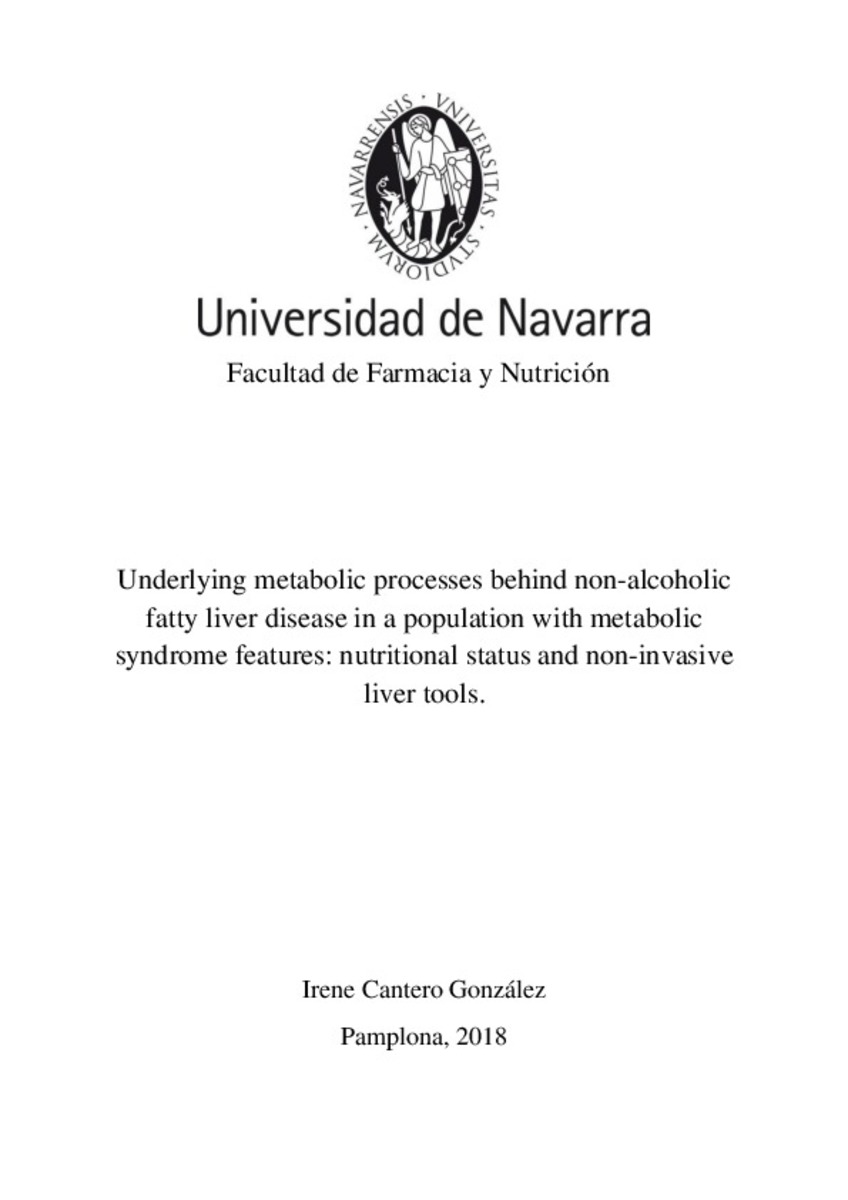Underlying metabolic processes behind non-alcoholic fatty liver disease in population with metabolic syndrome features: nutritional status and non-invasive liver tools
Palabras clave :
Liver disease
Materias Investigacion::Ciencias de la Salud::Nutrición y dietética
Ciencias de la nutrición
Enfermedades de la nutrición
Fecha de publicación :
29-ene-2019
Fecha de la defensa:
26-sep-2018
Cita:
CANTERO GONZÁLEZ, I. "Underlying metabolic processes behind non-alcoholic fatty liver disease in population with metabolic syndrome features: nutritional status and non-invasive liver tools". Zulet, M. Á. Tesis doctoral. Universidad de Navarra, 2018.
Aparece en las colecciones:
Estadísticas e impacto
0 citas en

0 citas en

Los ítems de Dadun están protegidos por copyright, con todos los derechos reservados, a menos que se indique lo contrario.







